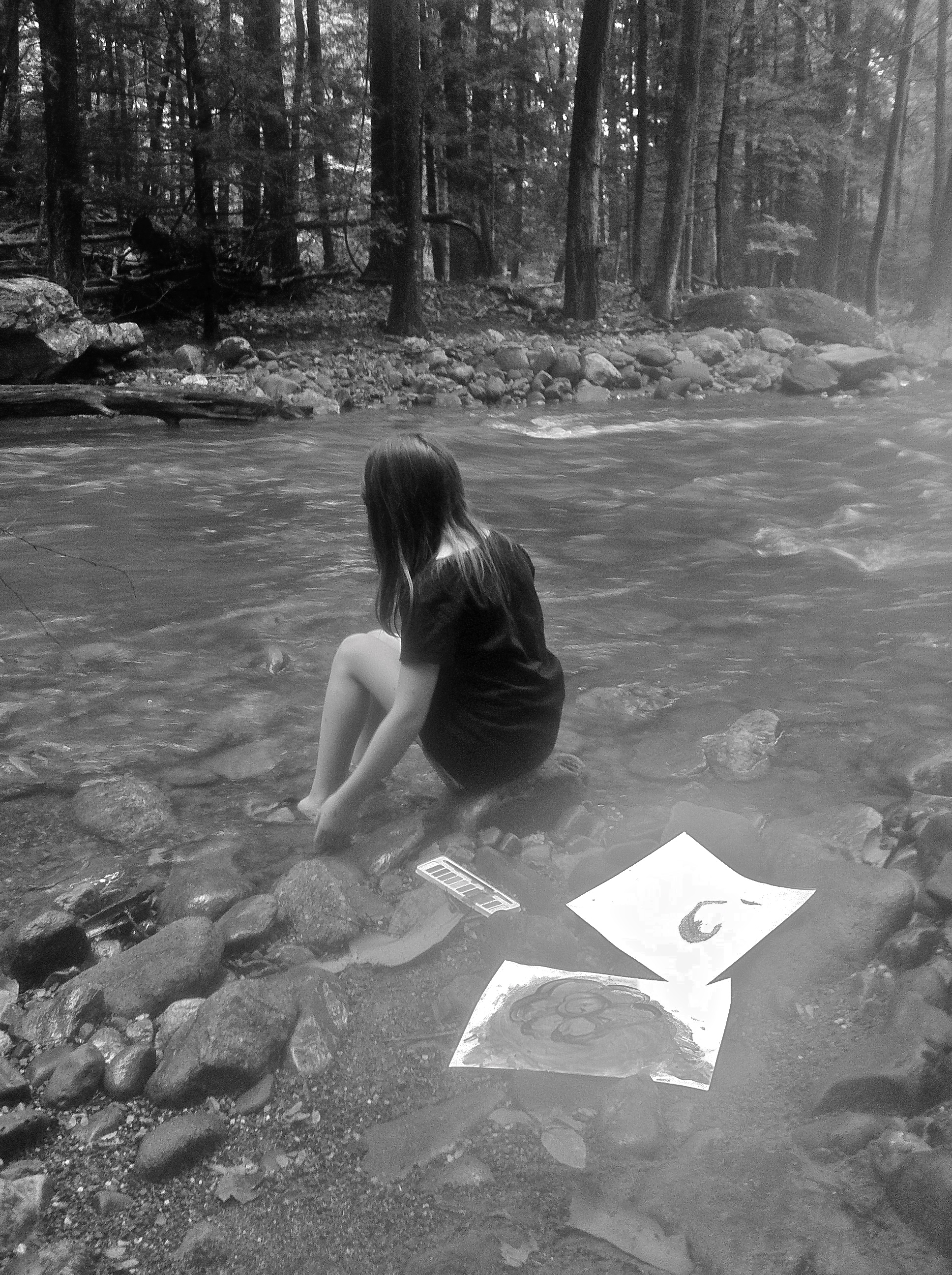Here's just a small sampling of the approaches, experiential modalities and techniques I use in my practice:
In addition to verbal psychotherapy, I work with several modalities or what we might call “portals of inspired engagement,” the most prominent ones being: Jungian Sandplay Therapy, SoulCollage®, expressive arts, and a variety of mindfulness-based practices that work on the body-mind-spirit levels (such as guided visualizations and meditation). These experiential approaches help bypass our defenses to quickly access whatever needs attention in the present. Our defenses are important - they protect us from harm (perceived or real) - but over time, they can become restrictive and limiting. These expressive and symbolic techniques accurately help us identify where to focus our attention in a manner that is direct yet non-threatening.
The beauty of these techniques is that they can be used in conjunction with verbal psychotherapy and/or spiritual counseling. This techniques can accelerate the therapeutic process - sometimes leading to faster and more lasting results.
“Theresa Bimka is that rare breed of psychotherapist that combines clinical acumen with the ability to think and work ‘out of the box’, while also bringing great care, compassion, and creativity to the art of listening. Trained in several creative and experiential modalities, Therese’s work with children and her work with adolescents and adults engages the imagination to foster change and deepen their experience of being human.”
Using Art and Nature for Healing
I have an extensive Sandplay figurine collection at both my Brooklyn & Hudson Valley offices.
Sandplay Hibernation Chamber by 12-year-old girl
Expression that emerged unexpectedly ~ 10-year-old boy
Jungian Sandplay Therapy
Jungian Sandplay Therapy, as developed by Jung protégée Dora Kalff, works on the symbolic and archetypal level, and is thereby able to access unconscious material gently and quickly. What makes Jungian Sandplay therapy so exciting and effective is how effortlessly it captures the essential elements of the psyche's inner landscape, bringing to the surface that which needs attention and/or healing in the present.
In Sandplay therapy, the client is invited to engage the active imagination and enter a state of "lucid dreaming" while creating a story or "world" by manipulating miniatures within a tray of sand. The tray itself, held as a safe and protected space by the therapist, creates the vessel for healing, bridging, revelation, and transformation. It is a fun yet deeply nourishing modality that is both powerful and gentle.
This type of therapy is used as a clinical treatment by itself or as an adjunct to verbal psychotherapy. It is appropriate for adults and children.
WORKING WITH ART MATERIALS
Art provides another "way in" that is gentle, symbolic, and therapeutic. There are many ways to incorporate art into therapy, including both directive and open-ended "exercises." In my work, I have used the visual arts as well as writing as a means of gaining insight, releasing emotion, shifting destructive behaviors and patterns, accessing inner wisdom and intuition, and establishing greater balance and equanimity. A variety of art materials is available for use, including clay, paint, colored pencils, markers and pastels.
Guided Visualizations
Guided Visualizations provide yet another vehicle for direct inner work that gently gets past where we are most defended. Guided Visualizations can access and reclaim split-off aspects of self as well as emotions that are stuck or frozen in the past. The power of this technique lies in its ability to get to the source. In fact, Guided Visualizations can retrieve childhood experiences using visual imagery, body-based sensations, and symbolic imagery. Guided Visualizations can also be used to ameliorate physical symptoms. They are used to invoke a relaxation response as well as provide imagery that may foster healing.
“Therese has a real gift with using guided visualizations for healing and transformation. I found this way of working to be highly attuned, fast, accurate and very engaging. It is fun and deep at the same time. I did a lot of healing in a short amount of time.”
Body-Based Healing
I have received training in a number of body-based systems, including Gestalt, Chakra Work, Process-Oriented Therapy, Guided Visualizations for Healing, Relaxation and Mindfulness, and Judith Blackstone's work, known as The Realization Process.
When working with the body, two sayings come to mind: The body never lies and Your biography can become your biology. Using the body as a portal for healing and transformation is powerful and a great support for all aspects of psychotherapeutic work.
Stress Reduction
Relaxation and stress reduction exercises can be taught and used to ameliorate disturbing moods. Stress and anxiety are often triggered automatically, but these tools and techniques interrupt the automatic response – giving the client increased capacity to self-regulate and exercise genuine choice. When symptoms are reduced, deeper material can be accessed, thereby accelerating the therapeutic process.
Gestalt Therapy
While there are several schools of thought within Gestalt Therapy, some basic principles apply across the board. Gestalt is a present-based therapy using "what is stuck" in the here and now as guideposts for where the therapy can focus. Additionally, Gestalt therapy uses the body as a source of wisdom, helping to identify and "give voice" to unexpressed needs, thoughts and feelings.
In my postgraduate training, I pursued a Gestalt model that uses a relational approach - meaning that the therapeutic relationship itself is identified as a powerful vehicle for healing and recovery work. Here recovery is used in its broader sense: recovery of an authentic sense of self.




